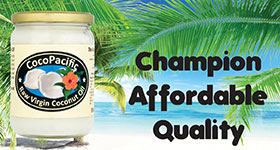|
|
The sodium dilemma – and a possible solution – Fortiflavor |
David Thomas is a chiropractor with a serious interest in nutrition. In the 1990s, using the government's own figures, he compared the nutritional content of common British foods in 1940 with that of a similar foods in 1991. He was so shocked by what he discovered (see Mineral Deficiencies and their fallout) that he started to search for a way to replace the minerals with which our food was no longer providing us. His search took him to the Great Salt Lakes of Utah. Now, ten years later, his concern is with salt consumption... However, sodium is an essential mineral found mainly in extracellular fluids, vascular fluids within the blood vessels, arteries, veins, and capillaries; and intestinal fluids surrounding the cells. Sodium is absorbed in the small intestine where it is carried via the bloodstream to the kidney. The kidneys then filter out the necessary sodium the body needs to maintain blood sodium levels and then releases this amount into the bloodstream. The excess is then excreted in the urine. Sodium is essential for maintaining blood pH and proper water balance. Together with potassium, sodium helps regulate the distribution of fluids on either side of the cell walls. Sodium and potassium are also intricately involved in muscle contraction and expansion as well as nerve stimulation. Sodium also keeps the other blood minerals soluble so that a build up of other minerals will not accumulate in the blood stream. Sodium also acts with chlorine to improve blood and lymph health and aids in eliminating carbon dioxide from the body. Poorly represented in natural food sources The fallout from excess consumption Reduce, reduce... Enter Fortiflavor... Fortiflavor for the home consumer To find Fortisalt in the US, check out the Fortisalt website; unfortunately it is not available in the UK at the moment but hopesully will by, by mail order, in a few months. We will update this article as soon as it is.
References First published in 2010 Click here for LINKS to manufacturers of nutrition and food supplements. |








